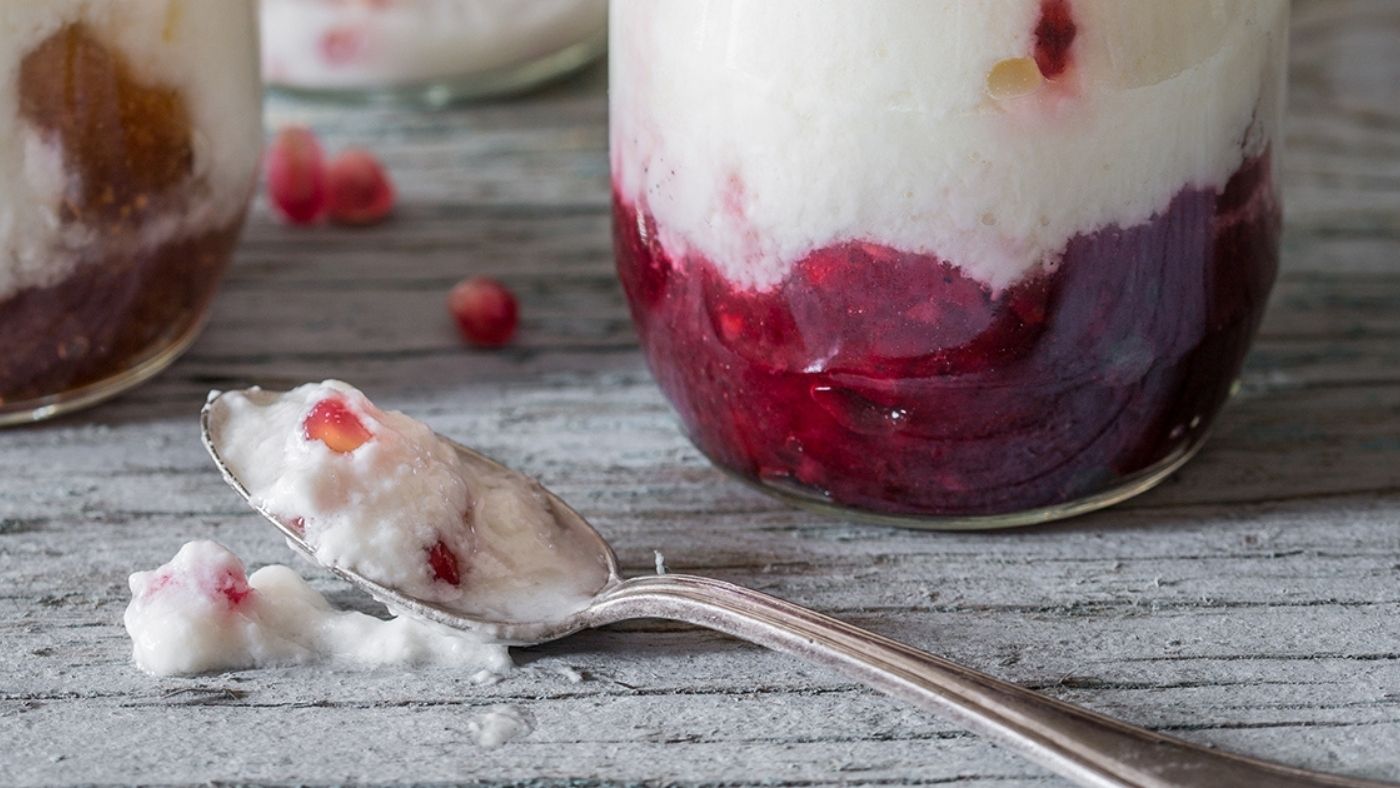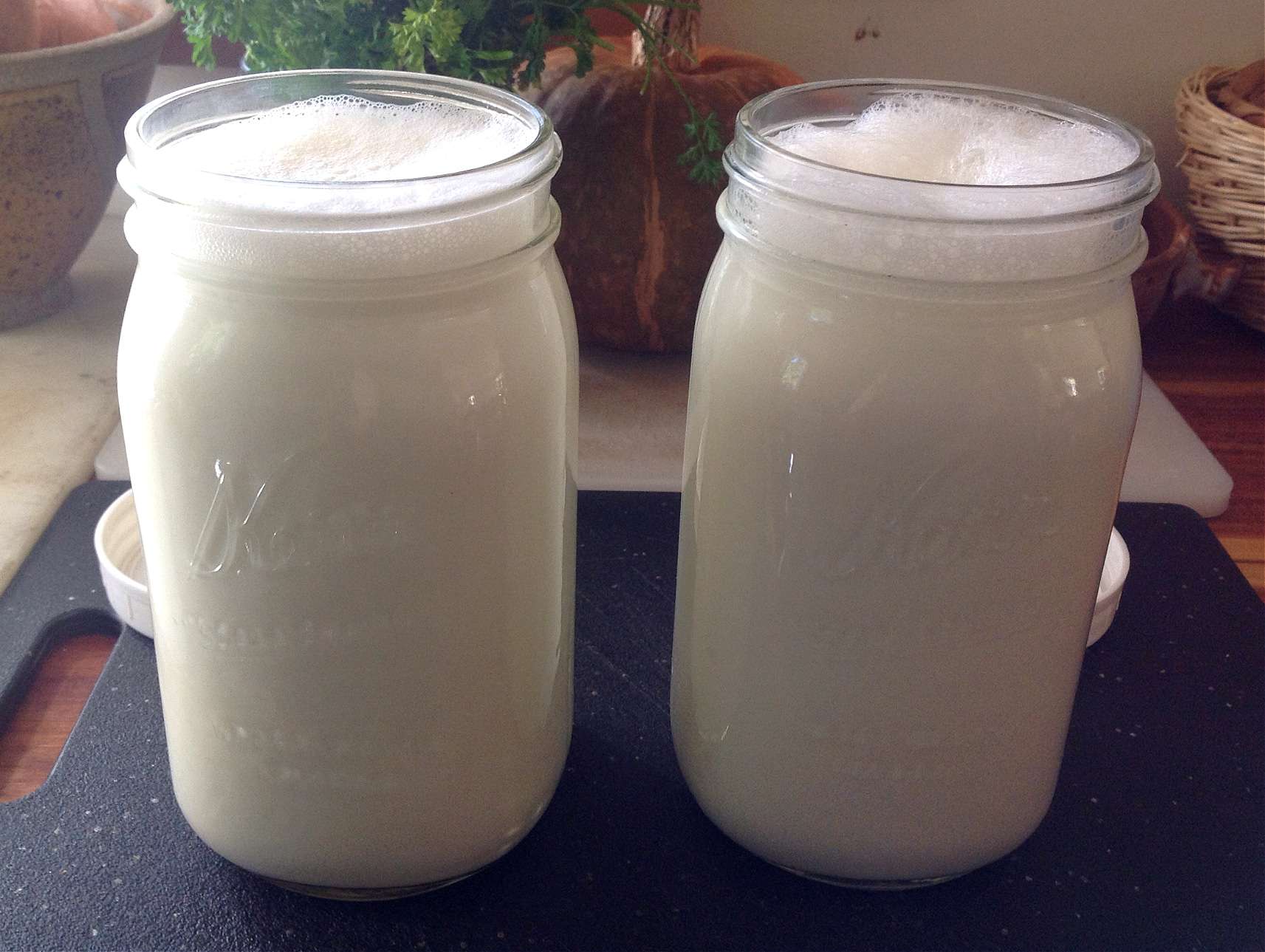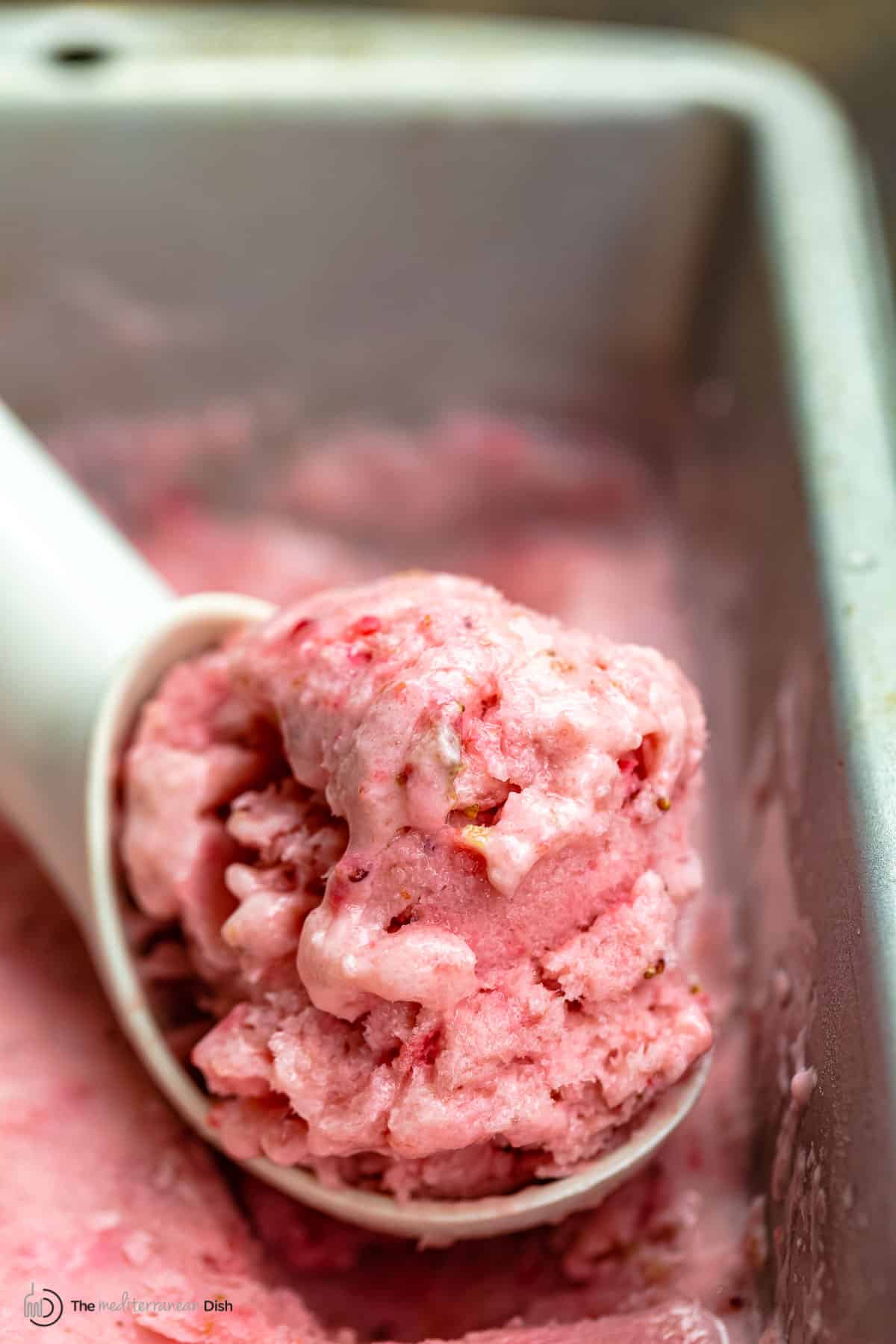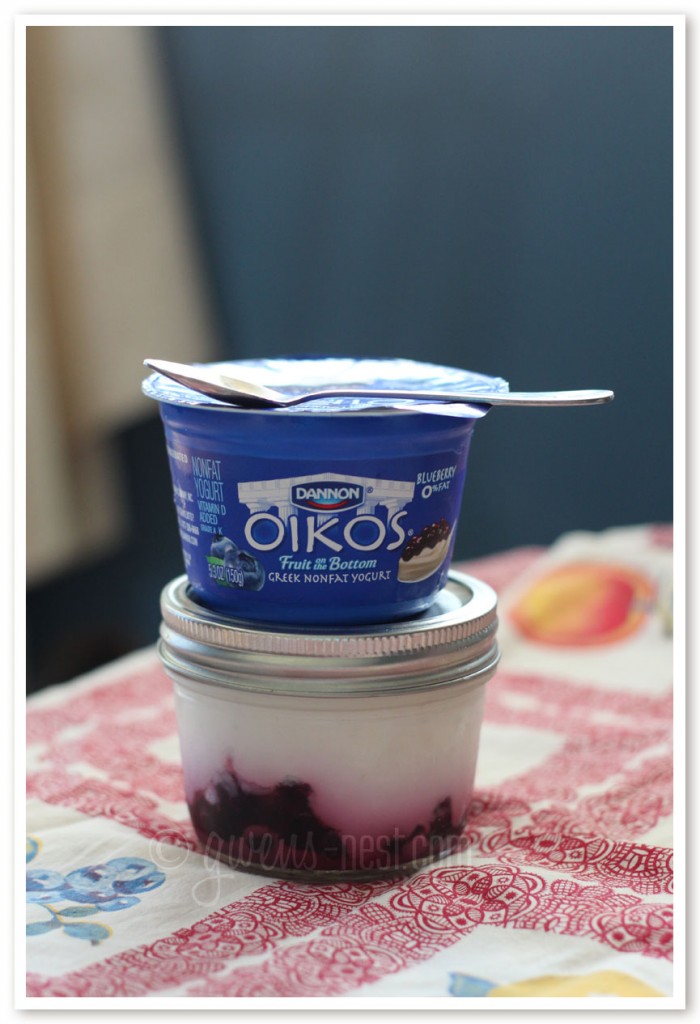Homemade Yogurt Recipe
Your folders
Your folders
/__opt__aboutcom__coeus__resources__content_migration__serious_eats__seriouseats.com__2019__06__20190614-yogurt-vicky-wasik-8-1b8381eea1b44c17ac31879c11e6c624.jpg)
Ingredients
Export 2 ingredients for grocery delivery
Instructions
In a medium saucepan or saucier, heat milk gently over medium heat until it reaches 180°F (82°C) on an instant-read thermometer. Keep the milk between 180 and 190°F (82 to 88°C) for at least 10 minutes and up to 30 minutes (how long you hold the milk at this temperature will change how much water steams off and how concentrated the milk proteins and fats end up, changing the final texture of the yogurt; there's no one right way to do it). Allow the milk to cool to about 110°F (43°C). In a small bowl, stir together the yogurt with a few spoonfuls of the warm milk, then scrape the yogurt mixture into the pot of lukewarm milk. Stir well to distribute the yogurt culture. Transfer the cultured milk to glass jars, the vessels of a yogurt maker, an Indian clay yogurt pot, or whatever incubating device you may have, such as a slow cooker or Instant Pot. Cover the jars and keep warm; how you do this depends on what you have at home. You can submerge the jars up to their necks in the temperature-controlled water of an immersion circulator (set to 110°F or the incubation temperature of your choosing); place them in a turned-off oven with the light switched on; wrap them in kitchen towels and hold them in a warm place; submerge them in 110°F water held in a cooler; use a yogurt maker, etc. How long it takes the yogurt to set will depend on the temperature at which it is held. This can be as short as 3 or 4 hours and as long as 18 hours. Once the yogurt has set, allow it to sit out at room temperature for up to an additional 12 hours to ensure a strong culture; if you're working with a culture you know well, you may not need to let it sit out for so long, especially if you don't want it to grow too sour. There's no one good rule here except to give the yogurt the time it needs to sour and thicken properly. Transfer the yogurt to the refrigerator and, if you can, let it set for another 2 or 3 days before eating it (all this time is simply to allow the culture to grow strong). Strain it to make Greek yogurt, if desired. If you plan to use this yogurt to inoculate future batches, make sure to set a few tablespoons aside.
Top similar recipes
Curated for youYour folders

 259 views
259 viewsHomemade Yogurt Recipe
feastingathome.com
4.9
(9)
8 hours
Your folders

 334 views
334 viewsHomemade Yogurt Recipe
revolutionfermentation.com
Your folders
/__opt__aboutcom__coeus__resources__content_migration__serious_eats__seriouseats.com__images__2014__09__20140907-ny-yogurts-kesso-5-vicky-wasik-211393c1d4cf461889420e00a2c95548.jpg)
 267 views
267 viewsHomemade Greek Yogurt Recipe
seriouseats.com
Your folders

 229 views
229 viewsHomemade Yogurt recipe | Epicurious...
epicurious.com
4.0
(41)
Your folders

 136 views
136 viewsHomemade Maple Yogurt Recipe
allrecipes.com
5.0
(1)
8 hours, 5 minutes
Your folders

 200 views
200 viewsHomemade Frozen Yogurt Recipe
acouplecooks.com
Your folders

 699 views
699 viewsHomemade Yogurt
amindfullmom.com
4.8
(209)
540 minutes
Your folders

 212 views
212 viewsHomemade Yogurt
thesaltandsweet.com
5.0
(5)
6 hours
Your folders

 331 views
331 viewsHomemade Yogurt
bonappetit.com
3.6
(156)
Your folders

 216 views
216 viewsHomemade Yogurt
tasteofhome.com
20 minutes
Your folders

 272 views
272 viewsHomemade Yogurt
growforagecookferment.com
4.8
(4)
20 minutes
Your folders
 50 views
50 viewsHomemade Yogurt
alphafoodie.com
Your folders

 118 views
118 viewsHomemade Yogurt
americastestkitchen.com
4.0
(56)
Your folders

 257 views
257 viewsEasy Homemade Frozen Yogurt Recipe
themediterraneandish.com
4.8
(31)
Your folders

 138 views
138 viewsHomemade Raw Milk Yogurt Recipe
carnivore.diet
18 hours
Your folders

 268 views
268 viewsHomemade Frozen Yogurt (Healthy Rec...
easybudgetrecipes.com
5.0
(2)
Your folders

 79 views
79 viewsHomemade Fruit Bottom Yogurt Recipe
gwens-nest.com
5.0
Your folders

 342 views
342 viewsCreamy Homemade Yogurt
cooking.nytimes.com
5.0
(829)
Your folders

 220 views
220 viewsHomemade Nondairy Yogurt
cooking.nytimes.com
4.0
(81)